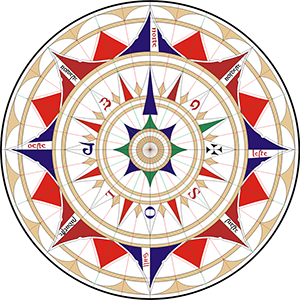As a single woman well over forty, I’ve entered the final stretch of an interdisciplinary doctoral degree after several years of hard labor. Due to familial and financial obligations, I’ve had to work nearly full time throughout my program. This combination of work and intense study has been costly on many levels—personal, physical, social, and, most of all, spiritual. This is ironic since my degree is in theology and education.
At some point, I noticed that the passions fueling my midlife leap had been depleted. Never-ending professional demands left me ragged. I regretted a lost relationship, my lack of children, the geographical distance from friends and family, and the end of a modest but stable lifestyle as a college instructor. To make matters worse, I was an alien in my own program and new city—a Protestant at a Catholic school; a feminist woman in a field dominated by men; a warm, magnolia-loving Southerner in the frigid land of snow and Puritans. In classes or out running errands, I often felt like I was hearing a strange language. It might have been English, but the dialect was unfamiliar. There was much I didn’t understand. Yanked from my roots, I didn’t know who I was or what I believed in anymore. Even worse, I didn’t know what to say or how to say it, a dire situation for a veteran talker and writer.
What caught me as I spiraled downward into silence was a big, lovely net knitted together by words, sentences, paragraphs, pages. The language that I had lost helped me reclaim myself and my spiritual sensibility—in short, I was saved by writing. I kept a daily blog of long-form essays, linking it to my Facebook page where I had at least minimal contact with like-minded folks. They read and commented—not too many of them at first, but just enough to remind me that I was not alone. After my life and studies became too complicated, I abandoned the meaty extracurricular prose and turned my keyboard toward pithy little posts. During the horrendous year of comprehensive exams, these became meditations on flowers, as I forced myself to take daily walk breaks from my studies, during which I photographed whatever was leafing and blooming along the city sidewalks. My growing readership loved the photographs and the vignettes I wrote to accompany them, and I received friendly complaints when I stopped posting them this past year.
 The Guide for the Guild is a series of blogs posts submitted by AAR members in response to the Status on Women in the Profession Committee's work-life balance project. To learn more, visit SWP's page on the AAR website.
The Guide for the Guild is a series of blogs posts submitted by AAR members in response to the Status on Women in the Profession Committee's work-life balance project. To learn more, visit SWP's page on the AAR website. The Guide for the Guild is a series of blogs posts submitted by AAR members in response to the Status on Women in the Profession Committee's work-life balance project. To learn more, visit SWP's page on the AAR website.
The Guide for the Guild is a series of blogs posts submitted by AAR members in response to the Status on Women in the Profession Committee's work-life balance project. To learn more, visit SWP's page on the AAR website.